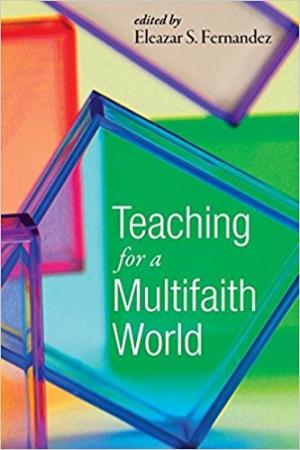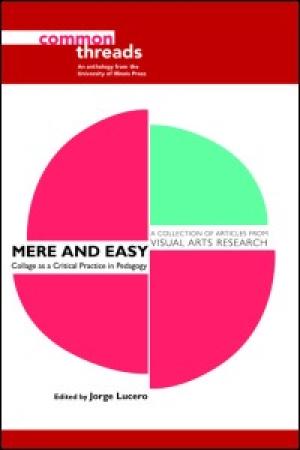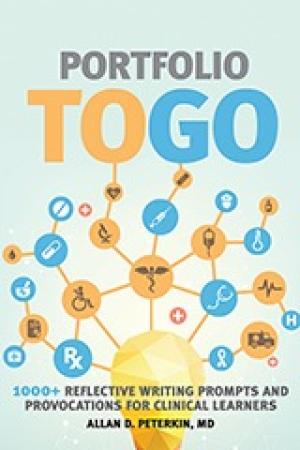Resources by R. Jane Williams

The public arena of the 21st century has become one in which religious intolerance and inflammatory and questionable assertions about religions and specific groups of people are not only acceptable to many persons but are frequently invited and modeled by community leaders at many levels of mainstream American culture. Religious leaders who might model critical public engagement and expose ignorant and dangerous misrepresentations of whole faith communities are rarely represented in media. Meanwhile, current data suggests that more than 25 percent of married couples in America are interfaith. How do seminaries prepare students to minister in a global society where fear, lies, and misunderstandings are rampant and where interreligious understanding and cooperation are so essential to human survival and community? Most seminaries have already recognized one basic assertion of this book -- that seminary teaching is not about pouring stable and unchanging religious content into our students. Healthy seminaries of the 21st century are called instead to help students grow deep and secure roots in their faith tradition such that fear of the Other will be replaced by curiosity and engagement while appreciating, practicing, and honoring their own faith identity. Such secure attachment to their faith identities will help students minister in the multifaith contexts they are likely to encounter while offering pastoral care in any community they serve. Fernandez and his colleagues offer thought-provoking, creative chapters on spiritual formation, curriculum development, multifaith pastoral care, and public ministry in the age of terrorism and over-the-top propaganda, lies, and misunderstandings that have created the fear and isolation of American religious and secular culture. Teaching in a Multifaith World includes chapters that address seminary education from the perspective of theoretical lectures and models to practical guidelines and principles. For example, in chapter 3, Mary Hess asserts that current students benefit from the almost universal experience of video gaming and are more open to collaborative learning, recognition of human fallibility, and acceptance of change than faculty may believe. Today’s students, she believes, are used to learning from experience, reflection, retrying, and developing skills at noticing differences and similarities that provide clues to choices they need to make. Hess advises faculty to build on these skills by exploring in vivo experiences of relationship with those of other faiths. Multifaith learning need not relativize beliefs as having equal truth but should ground students in humility that enables engagement with other faiths while deepening one’s own religious roots and identity. Helping students explore rather than debate the verity of other faiths decreases the fear that comes from ignorance and diminishes the power of fear-based claims and labels propounded in the public sphere. Kujawa-Holbrook’s chapter is the capstone of the volume and begins by asserting that “Interreligious learning emanates from the collective belief that we are all, despite our religious differences, part of one human community” (199). She offers aspirational characteristics of healthy religious communities that can be generalized to most congregations. Communities of faith must first be able to sustain relationships of mutual care and respect that embody belief in the dignity of every human being within their own community. Healthy relationships within one’s home community become indicators of healthy relationship potential with those outside one’s own community. Hospitality is not just a welcome sign on the door, but includes an awareness of food choices, timing of Sabbath, and an open-hearted welcome of strangers. The proliferation of multifaith families presents congregations with opportunities for interreligious understanding (as opposed to conversion possibilities) as the presence of such families unearths hitherto unknown varieties of holiday celebrations, birthing and funeral traditions, premarital counseling needs, and a multitude of other learnings. While many experienced faculty were trained to offer the stable and enduring truths of a given faith perspective, post-modern and post-colonial studies have created recognition of the need for fluency in the changing nature of knowledge and the importance of self-awareness of one’s perspective and experiences such that knowing, honoring, and speaking from one’s specific religious identity involves openness to engagement with others in a spirit of curiosity and respect. Seminaries and their graduates have a role to play in helping to create bridges between different communities (religious and other) rather than walls. Those seminaries moving toward building bridges would do well to assign Teaching in a Multifaith World as required faculty reading.

Author Jorge Lucero uses the term collage as a descriptor of a particular art form and also as a metaphor for juxtaposed ideas and themes in his edited collection of articles. Assessing collage compositions in general as stale and conventional, Lucero asks what would make collage a challenging and invigorating form for pedagogy and scholarship and attempts to model one way in his collection of essays. Collage is a form that uses what one can access in printed images, photographic images, and digital images. One can assemble collages online or by using any of a multiplicity of surfaces and means of attachment. Lucero describes the collage-making process as deceptively easy and seemingly simple. Yet these qualities of “mereness and ease” (6) can enable two seemingly non-related images to create transformative possibilities of a third thing that was hitherto non-existent but is engendered by the creative or cognitive dissonance of a juxtaposition that is non-linear and non-complementary. This edited volume on collage includes a variety of practical and theoretical papers that become an intentional collage of ideas. Lucero describes his choice and arrangement of disparate paper topics as a way to make this volume “a collage in and of itself” (7). This reviewer found it difficult to resonate or discover meaning in the choice and sequence of articles. Nonetheless, Lucero’s attempt to create a collage of scholarship intended to inspire readers to create a “new sort of some thing” (7) is unique and thrilling. Among the gems in this book is the chapter by Grauer who conceives of teenagers’ bedrooms as collages illustrating their evolving identity. Describing a bedroom as a canvas on which can be displayed a young person’s “unique artifacts and symbols” (25), Grauer highlights the importance of paying attention to how teens’ rooms offer images to reflect upon, experiment with, explore, and create one’s own identity. Guyas and Keys relate how an art installation of written scholarly work displayed in a public interactive space can be fertile ground for personal and professional growth. The content and process of the author’s dissertations were displayed in a gallery by hanging individual pages from the ceiling. Art work by the authors was placed on the walls alongside narrative interpretations of the process of art-making. Gallery visitors were asked to record responses or thoughts that occurred as they looked at juxtaposed materials and post their responses on the walls. “The gallery merged from an exhibition/installation into an open studio as visitors added to the evolving collage” (32). Lucero includes a qualitative study by Stevenson and Duncum of early childhood development. Observing children drawing and then recording the children’s verbal reflections on their collage, the researchers concluded that abstract symbolization through images develops as early as age three. Engaging the children in reflective dialogue is noted as one way to aid three to five year olds in the development of symbolic representations and understanding. Among the articles included in this compendium are a reflection on Freudian analysis of symbol use in the Little Hans case, an examination of the metaphorical cloning of images, and a verbal collage whose narrative and dialogue overlap but are not clearly related. Lucero’s collection stretches the reader creatively and uncomfortably to find non-linear and unique connections between disparate articles. Its most useful audience is art educators and art students, although other educators will find several selections to be intriguing and useful in non-art fields.

From Dewey (How We Think [Boston: D.C. Heath,1933]) to Schön (Reflective Practitioner [New York: Basic 1983]), and most recently Palmer and Zajonc (The Heart of Higher Education [New York: Jossey Bass 2010]) and Barbezat and Bush (Contemplative Practices in Higher Education [New York: Jossey Bass, 2013]), reflective practice has a long pedagogical history, especially in clinical training. Reflective practice calls for revisiting one’s past or present experiences in order to analyze, reconsider, and mine the learning in them for use in the future. Reflective practice is increasingly being employed in higher education along with the use of contemplative practices as a means by which to increase student use of critical thinking skills and embodiment of “competence, compassion, collaboration, and a tolerance for ambiguity in the face of uncertainty” (Peterkin, 3). Portfolio to Go offers a multitude of questions that encourage deep reflection on clinical and personal experiences by students in healthcare training programs. Although some prompts refer specifically to clinical and medical settings (for example, “Describe the hospital corridors at 3 a.m.” [80]), most deal with far broader settings (“Write a story about the last time you were yelled at” [42]) and could be used by students in a wide range of disciplines and in classroom or small group settings. Peterkin encourages their use primarily in reflective writing such as journals, critical incident reflections, or stand-alone assignments. He identifies writing as a tool that increases awareness of feelings and thoughts about one’s work, but also as a vehicle that deepens critical thinking, enriches ethical insights in complex situations, and encourages development of one’s professional identity. Inclusion of reflective writing in student portfolios provides professors or future employers a glimpse of personal and professional learning and identity formation over time. Although Peterkin intends the book for students, it would be useful as an educator’s guide to the inclusion of reflective assignments in clinical courses. In the opinion of this reviewer, the most valuable parts of this book are the chapters that coach and teach students how reflection and storytelling can maximize professional growth. The chapters include how to critically reflect in one’s writing, how to move from reflection to actionable practice, how to form and participate in a reflective writing group, and how to deal with internal criticism. In one chapter, Peterkin differentiates criticism (negative) from critique (positive) by noting that the former finds fault, notes what is missing, and attacks the writer, while the latter identifies strengths, looks for possibilities, and is honest but kind. In the chapter on moving from reflection to action, the author notes simple but profound elements of clinical visits that students often struggle to implement such as asking open-ended questions (“what would you like me to know about you?” or “what is one thing you haven’t asked me, yet?”), listening for patient concerns and fears, noticing metaphors in conversation and using them to expand understanding, and being aware of body language (standing, sitting, touching) and how it impacts relationship. Educators often find assessing reflective writing and discussions difficult because of the personal and vulnerable nature of reflection. Peterkin offers a very useful rubric (118-120) that provides ways by which to measure levels of participation and reflection. Portfolios to Go is a helpful volume for any educator interested in exploring the value of reflective practice and in including reflective assignments in a classroom or clinical training program.